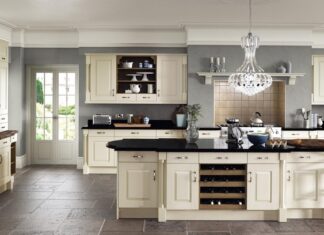Retro is a nostalgic aesthetic, but when the term was invented in the 1960s, it referred to the 1940s and 1950s. Over time, this vintage style incorporated more and different themes as we know them today. Retro is still thought of as the idyllic 1950s aesthetic, but also refers to the 1970s or even 1990s look. Retro-chic kitchens combine traditional styles with modern nuances.
The other key about the retro-chic kitchen is that it is intrinsically personal. Some people like to mix and match eras while others remain loyal to a specific time period in their ornamentation. However, while retro feels almost freeform, there is a certain “vintage look” that remains consistent and smart. Otherwise, you may end up with a look like a hodgepodge full of leftovers from a thrift store.
Here are eight essential tips to keep this retro-looking tight and trendy rather than haphazard and messy:
1. Pastel colors
 photo: Baking Misadventures
photo: Baking MisadventuresThe kitchen retro color palette is defined with pastel colors and neutrals like cream or even black and white. This will feel muted yet bright in many kitchens and the cream with the slight yellowing of age invokes nostalgia. Popular pastel colors in retro kitchens include mint green, turquoise, pale yellow and even baby pink.
However, when many people think retro kitchens, they will think of cherry red with black and white checkerboard floors. That is more a 50’s diner aesthetic, yet the look is so iconic, the bold look is adapted to kitchens. Pastels reflected real 1950’s kitchens at the time because it matched so well with the next tip to come: Chrome.
2. Chrome details and appliances
 photo: Good House Keeping
photo: Good House KeepingThe 1950s had a fascination with the World of Tomorrow, imagining the future in their kitchens and homes. In a sense, the 1950s aspired to be futuristic so this sense of retro-futurism feels utopian, almost like Disneyland’s Tomorrowland. Chrome was the prevalent metal in kitchens, simulating the look of 1950s cars with that metal. The shape of appliances in the kitchen even mimics the popular car styles of that era.
The shininess of chrome pairs well with the muted pastel color scheme. It’s usually in details such as chrome edge tables, countertops, and cabinet handles, almost acting like jewelry in the kitchen.
3. Square Wall Tile patterns
 photo: Decoholic
photo: DecoholicTiling was a large part of the retro kitchen with its shape creating a simple and easy room design. In the 1940s, wartime attitudes conveyed that tiles in kitchens and bathrooms were considered utilitarian so they were usually white. In the 1950s introduced colored tiles as an easy kitchen luxury so they appeared in city and suburban households.
Creating patterns with colored tile was an easy way to express yourself with a unique kitchen while still looking clean. Many patterns were square and rectangle patterns like checkerboard and basketweave but even 50s households used random colored tile placement.
Most importantly, the tiles were glazed for a glossy look since a shiny, bright kitchen is the retro ideal. The trend is mainly seen in backsplashes where they shine rather than countertops;
4. Terrazzo
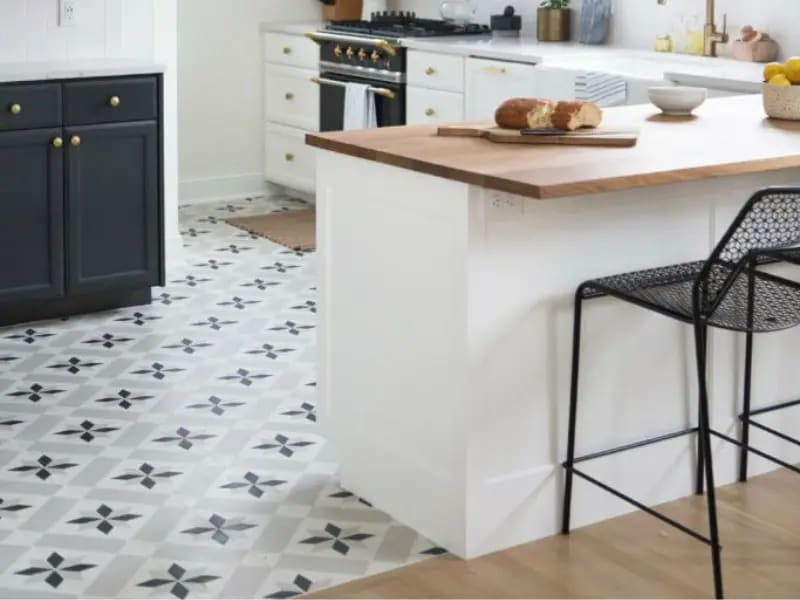 photo: Decoholic
photo: DecoholicFrom the 1920s to the 1940s, terrazzo tile was a popular choice for floors for its decorative scattered look. This product is made of pieces of marble, glass and quartz and epoxy, and creates a unique effortless texture. Terrazzo is highly customizable with materials and bonding agents so it was considered a luxury material for the home.
In 2020, it’s recently come back in popularity for floor and for countertops. With recent developments in bonding agents and materials, it is cheaper to have this surface in your home than before.
5. Statement appliances are meant to stand out
 photo: Priceless Magazines
photo: Priceless MagazinesEven though we talk about the popular colors, the stars in the kitchen were clearly the appliances. People were eager to talk about their new refrigerator, oven, dishwasher and even smaller appliances like toasters stood out.
Retro appliances were stainless steel, chrome, or colored and glossy. They usually did not match the other colors because they are meant to get your attention. It’s in theme for a retro kitchen with mint green tiles and cabinets to have a bright refrigerator and stove.
6. Retro art prints and pieces
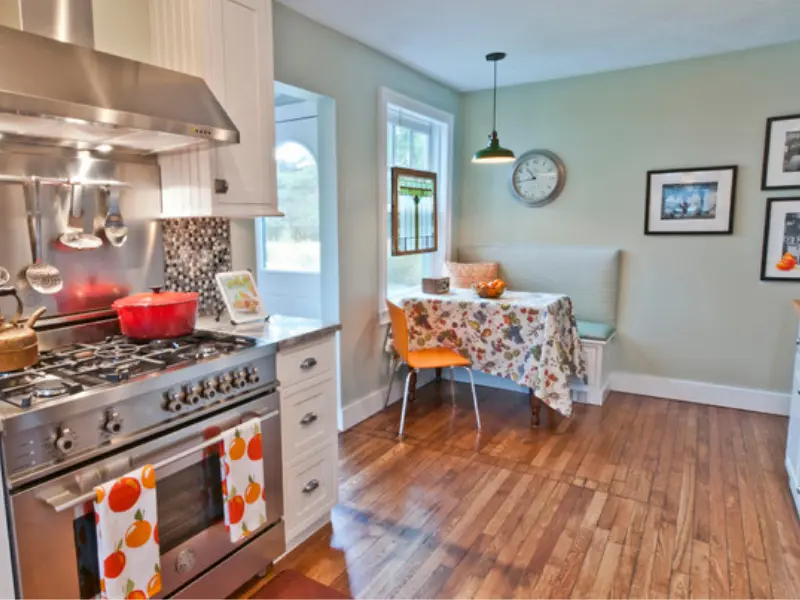 photo: Houzz
photo: HouzzOne of the most distinctive looks from the 1950s is the art print, usually of vintage ads from magazines. Vintage art embraces all sorts of iconography from products, animals, characters, cities and abstract art for posters and paintings. It is very easy to match your art to your décor or vice-versa where your art inspires your color palette.
If you want to go the extra retro mile, tin signs and panels add a nice touch of the past. This works nicely in the kitchen which already has metal cookware. Most tin panels have vintage art in mind with prints of Coca-Cola ads and Wizard of Oz movie signs.
7. Collection displays
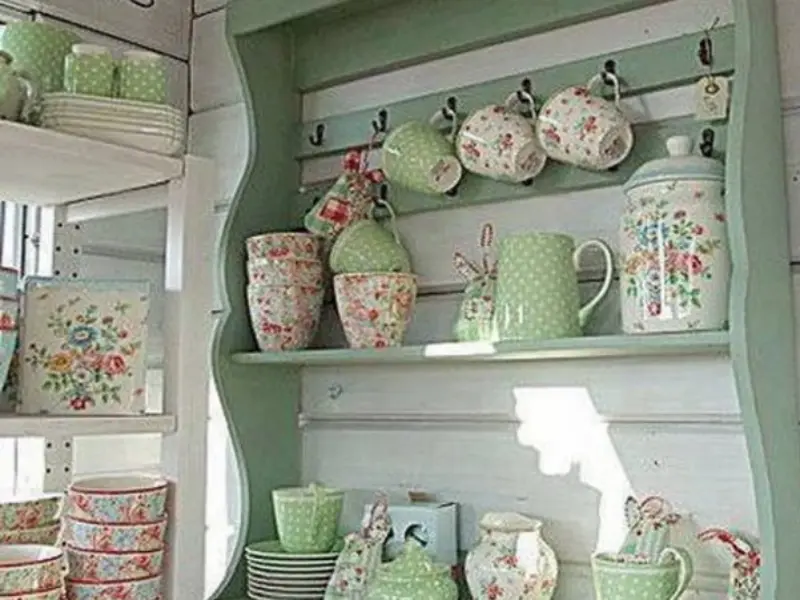 photo: Crismatec
photo: CrismatecTo complete the retro feel in your kitchen, it’s not complete without displays of a favorite theme or hobby. These collections can be anything from porcelain figurines, Mickey Mouse plates, shot glasses from around the world. It’s important to house collections in certain areas so they don’t look like an overabundance of things without a home. Depending on the collection, you will want to invest in display cabinets or have wall space to mount your objects.
The great part about having a unified theme is that it organically can tie a room together. But it’s important to not overdo a theme, otherwise, it will look like the Bunny Museum where it looks obsessive.
8. When in doubt, mimic your favorite room design
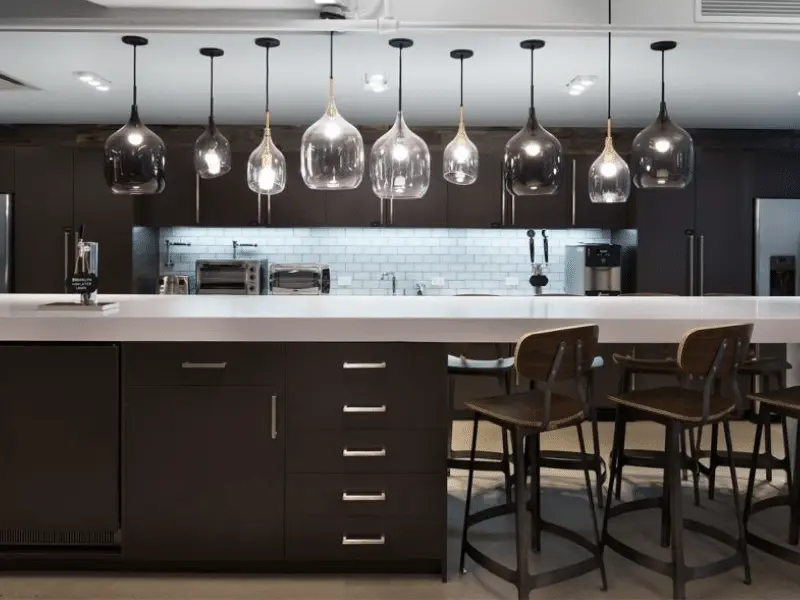 photo: Glass Door
photo: Glass DoorImitation is not only the sincerest form of flattery, but it also a source of inspiration. If you’re dealing with retro, you don’t always need an original design of your room, just a passionate one.
There are several places to find examples of retro kitchens like interior design sites like Houzz, Spruce or Harper’s Bazaar. However, an app like Pinterest allows you to narrow your search by a specific color or theme. Pinterest has the added benefit of pictures with links to articles, making it an aggregate site of inspiration.





